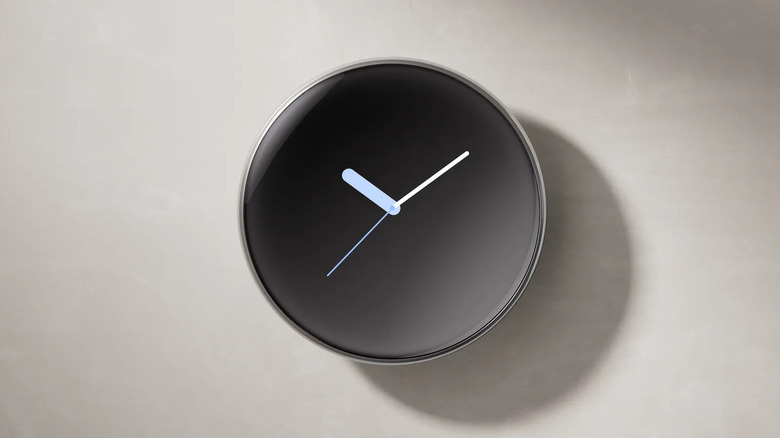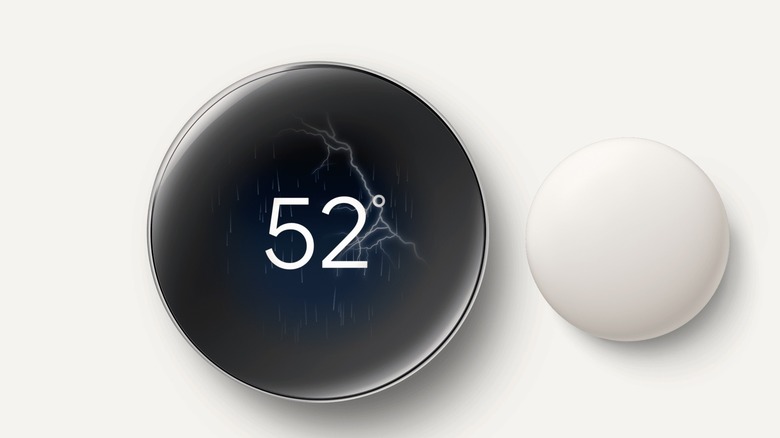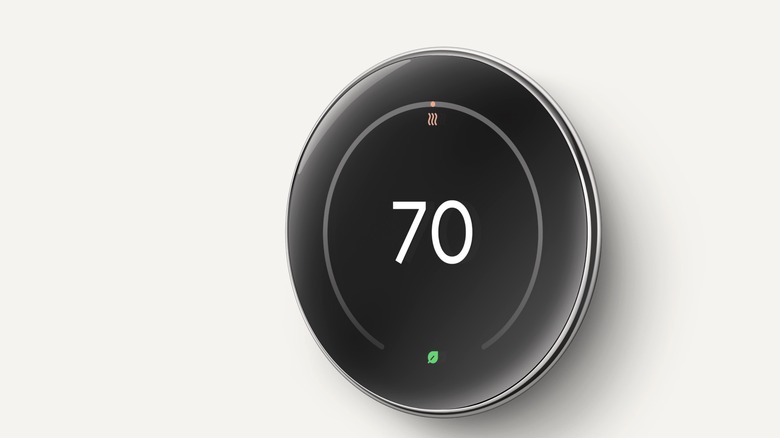All The New Features In Google's Nest Learning Thermostat (4th Gen)
The last time Google updated its thermostat lineup was when the company launched the standard "non-learning" Nest Thermostat in 2020, which the company continues to sell to this day. This $129 device remains the entry-level offering from Google for those looking for a Smart Thermostat. For anyone wanting a more advanced thermostat for their smart home ecosystem, the only option until recently was to get themselves the 3rd Generation model. The only issue with this 3rd generation model was that as of August 2024, the product was over nine years old and invariably due for an update.
It may have taken Google almost a decade to do it, but the company finally announced a successor to the Nest Learning Thermostat (3rd Gen) in August 2024. The rather obviously named Nest Learning Thermostat (4th Gen) gets several feature updates over the third-generation model launched way back in 2015.
If you have been looking for details about all the new features Google's newest Learning Thermostat model gets over the third-generation model, this article will address most of the queries you need answers to.
Google Nest is Matter compatible
Perhaps the most important addition to the Google Nest Thermostat (4th Gen) model is that it officially supports the new smart home connectivity standard, Matter. The Matter standard came to be after players in the home automation space figured that it was in their best interest to come up with an interoperable standard for all smart home and IoT (Internet of Things) devices.
This protocol allows smart home systems made by different manufacturers to communicate and network with each other, and has found backing from industry biggies like Apple, Google, Samsung, and even IKEA. As of 2024, more than 250 companies have pledged their support for the Matter protocol.
Interestingly, the Google Nest Learning Thermostat (4th Gen) is the second Matter-compatible product in the company's Thermostat lineup. In 2022, Google rolled out Matter compatibility to the standard Google Nest Thermostat launched in 2020.
What this means for end users is that this thermostat is not restricted to working with devices from Google's ecosystem. For example, it can be used with Apple Home products that are also Matter-certified. This certification also means you can control the thermostat and its various settings using a Matter-certified smart home app. This process requires users to set up this app beforehand by scanning a QR code on the thermostat's display and pairing it to the app.
Sleeker looks, larger display
If you are used to Google's 3rd generation Learning Thermostat, a quick look at the 4th generation model will make you realize that the new product follows the same design philosophy. The familiar rotating metal bangle, for example, is still there, and so is the curved lens, a design element that adds a bit of sophistication to the overall looks of the product.
What has changed, however, is that the newer model now gets a much larger display — 60% larger than the outgoing model. The larger display now shows more information all at once and also supports a feature wherein a single tap on the screen gives users a quick glance into what the thermostat is doing at any given moment.
The feature that Google has highlighted the most about the 4th Gen Learning Thermostat is called "Dynamic Farsight." This is an enhanced version of the "Farsight" feature that Google gave the 3rd generation model several years ago. Both these technologies use the thermostats onboard Soli sensors to detect human activity in the vicinity and turn the thermostat display on. With Dynamic Farsight, the 4th gen model can also detect when the person is away from the display and adjust the size of the on-screen content as the person gets closer to it.
Easier scheduling and more power-saving features
Along with the larger display and the addition of Dynamic Farsight, another feature addition to the 4th Gen Nest Learning Thermostat is called "Smart Schedule." This feature is designed to keep energy consumption as low as possible. It involves the user setting up a temperature schedule to start with. Over time, the thermostat "learns" the typical usage pattern of the user and comes up with a schedule that is best optimized for the user. The final decision of whether to accept the suggestions for the thermostat remains with the user and shows up on the Google Home app.
There may be occasions when the user and their family are away from home, and it isn't necessary for the Thermostat to maintain a set temperature. This is where the new adaptive eco feature comes into play. This feature is primarily designed to cut back on energy usage once it understands that the user and the rest of the family members are away. Once the members are back home, the feature also brings back the temperature to an optimum, comfortable level without the user having to manually set it.
New temperature sensor enables additional features
Another fresh addition to the Nest Learning Thermostat (4th Gen) is the completely new temperature sensor. Google includes one unit of this sensor as part of the 4th Gen Nest Learning Thermometer package. Those wanting to add more sensors to their smart home setup will need to add more units (a maximum of 6 per unit).
Interestingly, Google hasn't detailed the changes that the 2nd generation model gets over its predecessor. What has definitely changed, however, is the design, as the new sensor is a lot rounder. It is also pertinent to note here that the newly announced 2nd Gen Temperature Sensor is compatible with older Google Thermostat models, as well — including the Nest Thermostat E and the Nest Learning Thermostat (3rd Gen).
When connected with the latest 4th Gen Thermostat, this Temperature Sensor offers consumers the choice of one-hour increments to customize the temperature of specific rooms. With older Thermostat models, users could choose four fixed time intervals over a 24-hour period. Other additional features enabled by the combination of the 2nd Gen Temperature Sensor and the 4th Gen Thermostat include the ability to include a sensor in the thermostat's schedule and calculate average temperature across multiple rooms.
In addition to all these, the Nest Learning Thermostat (4th Gen) also gets additional wiring terminals that allow the system to be compatible with a broader range of HVAC systems, including humidifiers, dehumidifiers, and ventilation systems. Things have also improved as far as the installation process is concerned, with the newest Thermostat featuring an LED light that indicates that the unit is receiving power.
Google's Nest Learning Thermostat (4th Gen) costs $279.99, comes in three color options, and has been on sale since August 2024.




